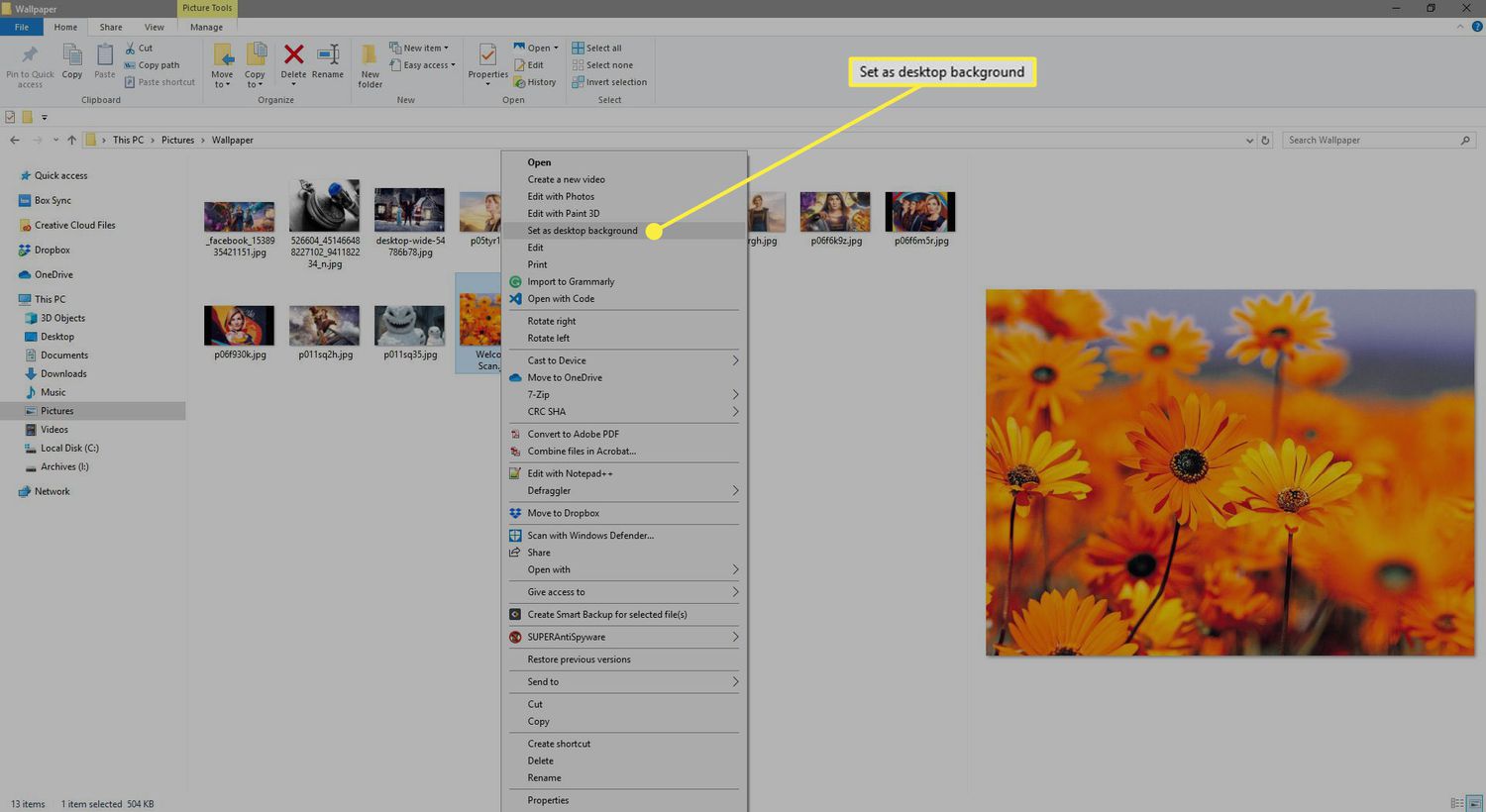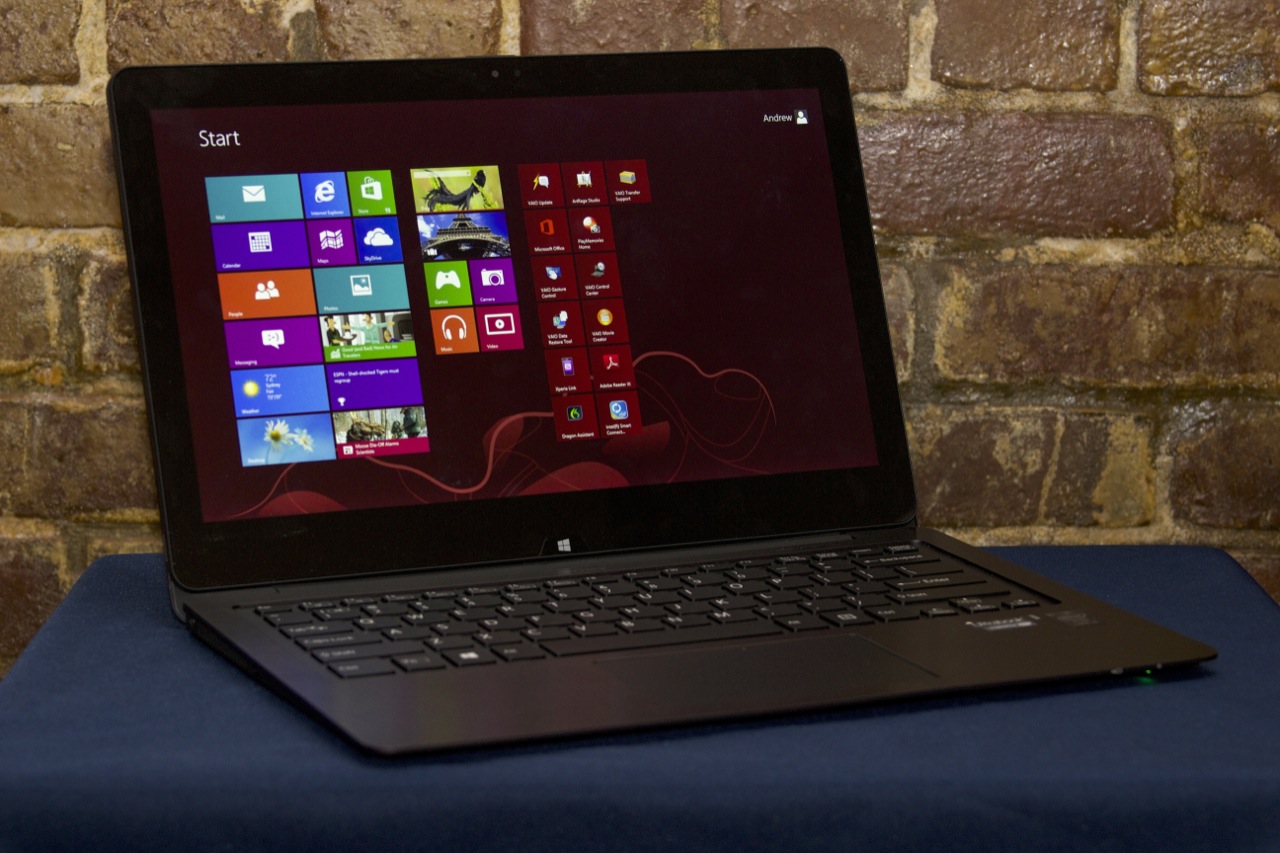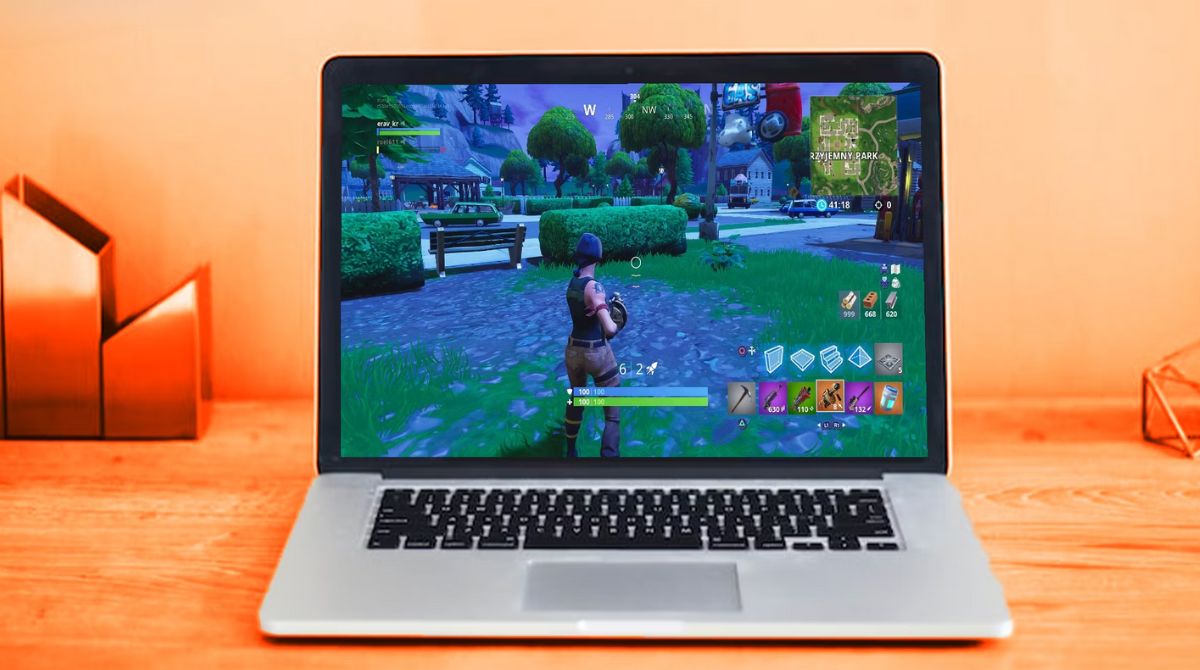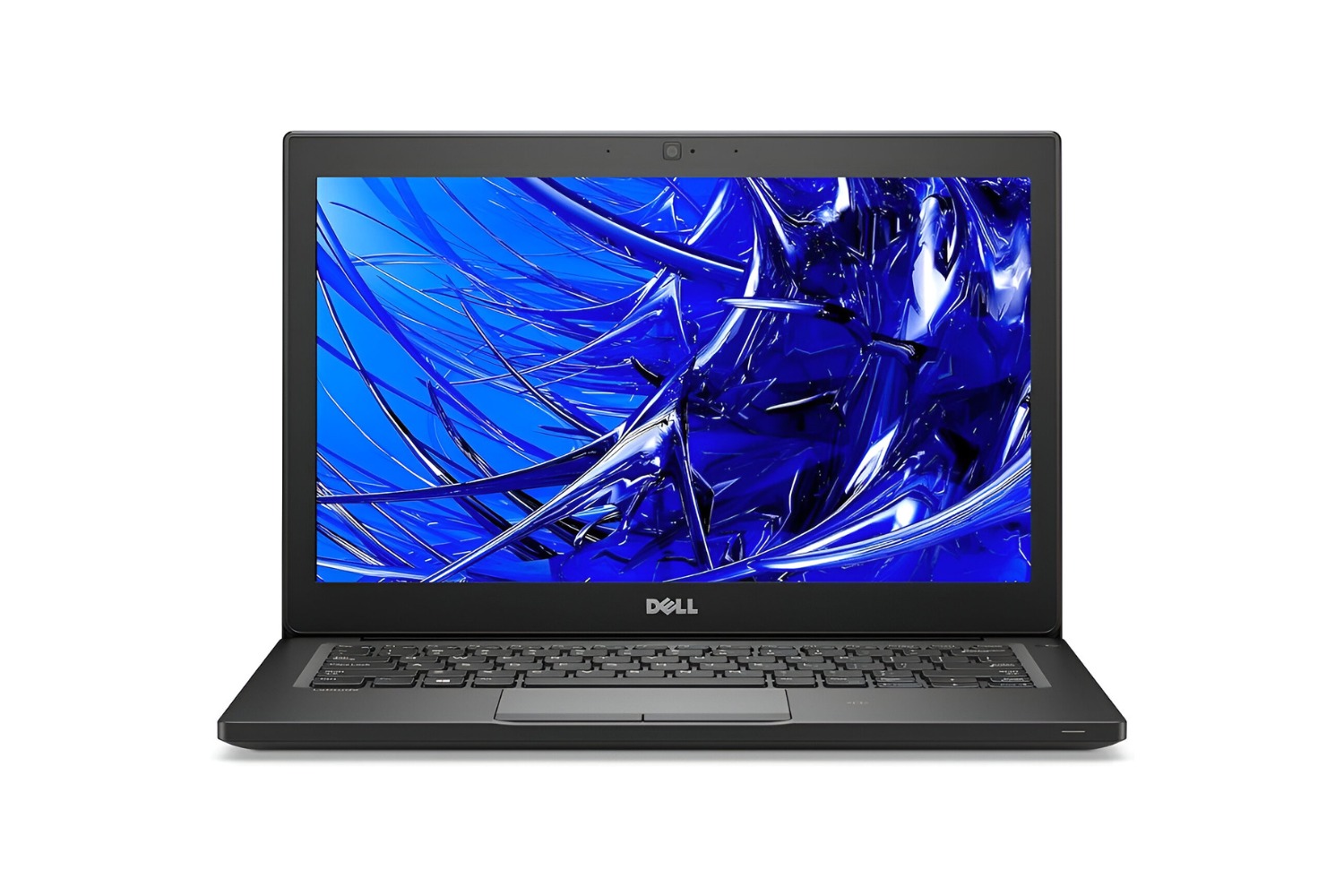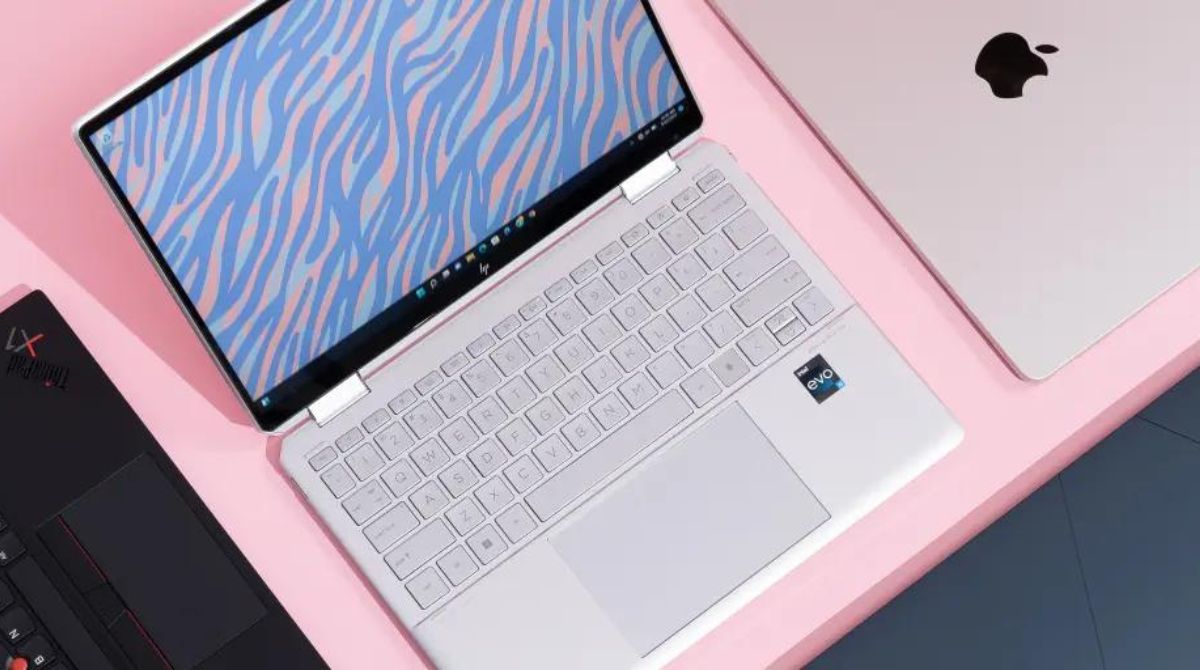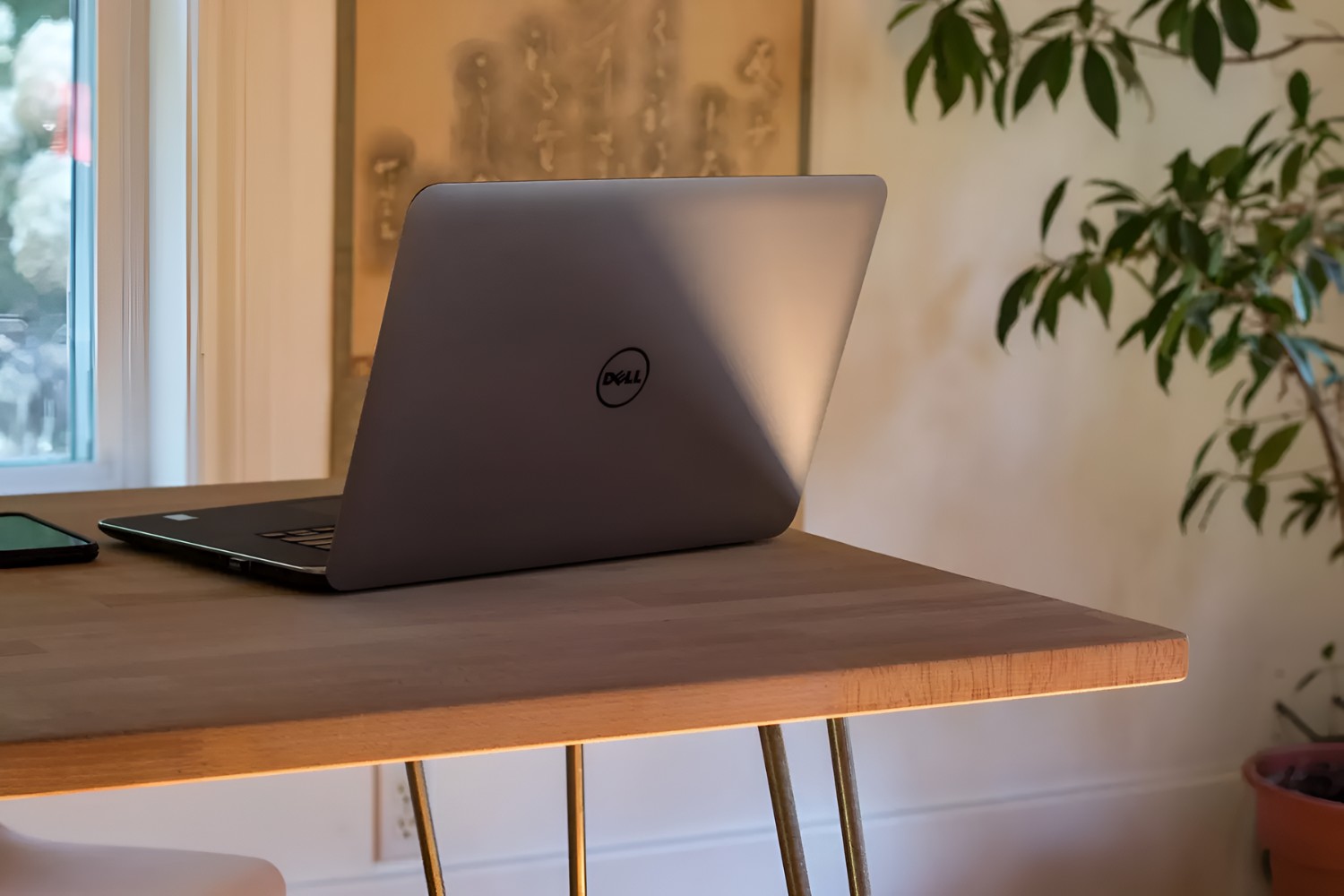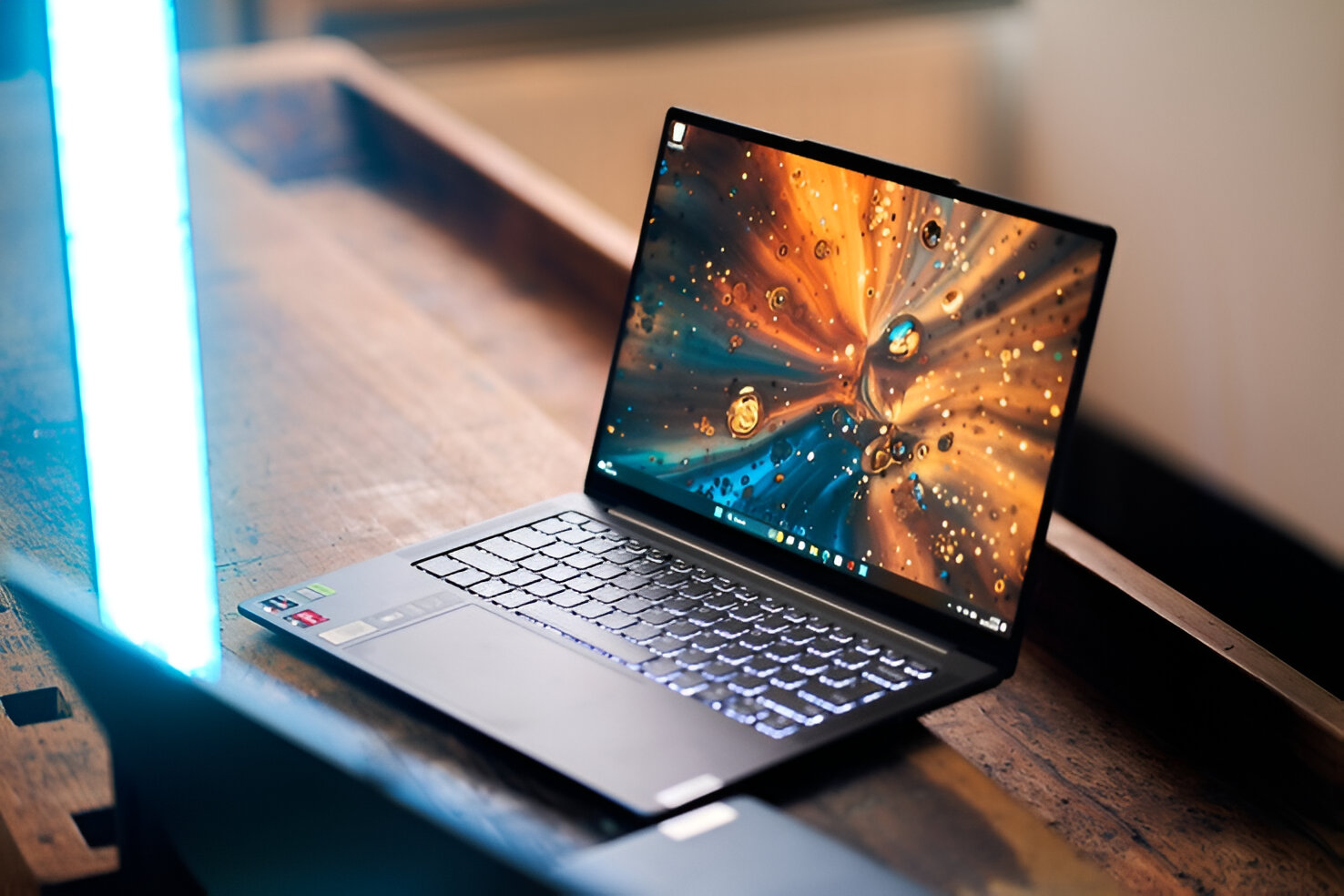Introduction
Welcome to the world of ultrabooks, where sleek design meets powerful performance. These lightweight and portable laptops have become increasingly popular in recent years, offering a perfect balance between functionality and style. Whether you’re a student, a professional, or a casual user, choosing the right ultrabook can greatly enhance your computing experience.
With so many options available on the market, it can be overwhelming to navigate through the sea of choices. That’s why we’ve compiled this comprehensive guide to help you make an informed decision when selecting an ultrabook that suits your needs and preferences.
When considering an ultrabook, it’s important to keep in mind that different individuals have different requirements. Some prioritize portability, while others focus on performance or display quality. By understanding the key factors to consider, you can narrow down your options and find the perfect ultrabook that ticks all the boxes.
In this guide, we’ll explore the factors to consider when choosing an ultrabook, such as portability, performance, display, battery life, storage options, connectivity, operating system, keyboard and touchpad, design and build quality, and price range. By examining each of these aspects, you’ll be able to make an educated decision and invest in a device that suits your needs without breaking the bank.
So, let’s dive in and discover how to choose the perfect ultrabook that will become your reliable companion for work, entertainment, and everything in between.
Factors to Consider When Choosing an Ultrabook
When it comes to choosing an ultrabook, there are several important factors to consider. These factors will help you determine the best fit for your specific needs and ensure that you are investing in a device that will enhance your productivity and enjoyment. Let’s take a closer look at these factors:
- Portability and Size: Ultrabooks are known for their slim and lightweight design, making them highly portable. Consider the size and weight of the ultrabook to ensure it is convenient for your daily use and can easily fit into your bag for on-the-go computing.
- Performance and Power: Look for an ultrabook with a powerful processor, sufficient RAM, and ample storage to handle your everyday tasks smoothly. Whether you’re a student or a professional, having a fast and efficient ultrabook will save you time and frustration.
- Display and Resolution: The quality and resolution of the display are crucial when it comes to working or streaming media on an ultrabook. Look for a high-resolution display with vibrant colors and wide viewing angles to ensure an immersive visual experience.
- Battery Life: Long battery life is essential, especially if you frequently work on the go or travel. Aim for an ultrabook that offers at least 8-10 hours of battery life to ensure that you can use it throughout the day without constantly needing to recharge.
- Storage Options: Consider the storage capacity and type of storage (e.g., solid-state drive or hybrid drive) offered by the ultrabook. SSD storage is faster and more reliable, while a higher storage capacity allows you to store more files and multimedia.
- Connectivity and Ports: Check the ultrabook’s connectivity options, including USB ports, HDMI, Ethernet, and Wi-Fi capabilities. Ensure that it has the necessary ports to connect your peripherals and external devices without any hassle.
- Operating System: Choose an ultrabook that comes with an operating system that you are familiar with and comfortable using. Whether it’s Windows, macOS, or Chrome OS, ensure that it aligns with your preferences and software requirements.
- Keyboard and Touchpad: A comfortable keyboard and a responsive touchpad are essential for extended typing sessions and precise navigation. Look for an ultrabook that has a well-designed keyboard layout and a spacious touchpad for enhanced usability.
- Design and Build Quality: The design and build quality of an ultrabook contribute to its durability and overall aesthetic appeal. Consider the materials used, the construction quality, and any additional features such as backlit keyboards or fingerprint scanners.
- Price Range: Finally, determine your budget and consider the price range of the ultrabooks that meet your requirements. Remember to strike a balance between features, performance, and affordability to make the most cost-effective choice.
By considering these factors and prioritizing your specific needs, you’ll be able to select an ultrabook that aligns perfectly with your requirements and offers a seamless computing experience. So, let’s explore the various ultrabooks available in the market and find your ideal match.
Portability and Size
When choosing an ultrabook, one of the most important factors to consider is portability and size. Ultrabooks are designed to be thin, lightweight, and highly portable, making them ideal for users who are always on the go. Here are a few key points to keep in mind:
Size: Ultrabooks come in a range of sizes, typically ranging from 11 inches to 15 inches. Consider your needs and preferences to determine the ideal size for your ultrabook. If you prioritize portability, a smaller size like 11 or 13 inches would be more suitable. However, if you need a larger display for work or entertainment purposes, a 15-inch ultrabook might be the better choice.
Weight: Along with size, weight plays a crucial role in the portability of an ultrabook. Look for an ultrabook that is lightweight and easy to carry around. If you travel frequently or need to work on the go, a lightweight ultrabook will be more convenient and comfortable to use, allowing you to slip it into your bag without feeling burdened.
Thinness: Ultrabooks are known for their slim profiles, thanks to advancements in technology. The thinner the ultrabook, the more convenient it is to carry and store, making it an excellent choice for those with limited space. Keep in mind that while a thinner ultrabook may be sleeker and more attractive, it may compromise on features such as connectivity ports or battery size.
Build Quality: When considering portability, it’s important to consider the build quality of the ultrabook. Look for a device made from high-quality materials such as aluminum or magnesium alloy, as they offer durability and lightweight benefits. A sturdy build ensures that your ultrabook can withstand the rigors of daily use and travel without sacrificing functionality.
Keyboard and Trackpad: In addition to the physical dimensions, it’s crucial to assess the keyboard and trackpad on an ultrabook. While a smaller size may mean a slightly cramped keyboard or a smaller trackpad, it’s essential to find a balance between portability and usability. Opt for an ultrabook with a comfortable keyboard layout and a responsive trackpad to ensure a pleasant typing and navigation experience.
Consider your specific usage scenarios and mobility requirements when evaluating the portability and size of an ultrabook. Whether you’re a student moving between classes, a professional constantly on the move, or a traveler needing a lightweight device, prioritize portability to ensure that your ultrabook seamlessly fits into your lifestyle.
Performance and Power
When choosing an ultrabook, one of the key factors to consider is its performance and power. The performance of an ultrabook determines how smoothly it can handle tasks and run demanding applications. Here are some important aspects to consider:
Processor: The processor is the brain of the ultrabook, responsible for executing tasks and calculations. Look for a modern processor from reputable brands like Intel or AMD. Consider the number of cores and clock speed to ensure efficient multitasking and speedy performance.
RAM: Random Access Memory (RAM) is crucial for running multiple applications simultaneously. The higher the amount of RAM, the better the multitasking capability of your ultrabook. Aim for at least 8GB of RAM, but if you will be engaging in resource-intensive tasks like video editing or gaming, consider opting for 16GB or more.
Storage: The type and capacity of storage are important factors to consider. Solid State Drives (SSDs) offer fast read and write speeds, improving the overall performance of your ultrabook. Look for an ultrabook with sufficient storage capacity for your needs. Consider the size of the SSD or the availability of additional storage options such as a secondary hard drive or an expandable memory slot.
Graphics: If you plan to use your ultrabook for graphic-intensive tasks like video editing or gaming, consider the graphics capabilities. Ultrabooks offer integrated or dedicated graphics cards. Integrated graphics are suitable for basic tasks, while dedicated graphics cards provide enhanced performance and smoother graphics rendering.
Battery Life: Along with performance, battery life is a critical factor to consider. Look for an ultrabook with long battery life to ensure that it can keep up with your daily workload without needing frequent recharging. Consider the manufacturer’s claims and read reviews to gauge the real-world battery performance.
Cooling System: The cooling system of an ultrabook plays a role in its performance. The heat generated by the processor and other components needs to be dissipated effectively to prevent performance throttling. Look for ultrabooks with efficient cooling systems to ensure optimal performance even during extended use.
Performance Modes: Some ultrabooks offer performance modes that allow you to switch between power-saving and high-performance settings. This feature can be handy when you want to optimize battery life or demand maximum performance for resource-intensive tasks.
Consider your specific needs and usage patterns when assessing the performance and power of an ultrabook. If you’re a casual user, a mid-range processor, 8GB of RAM, and a moderately sized SSD should suffice. However, if you’re a power user or professional, consider opting for a device with a high-performance processor, ample RAM, and a larger storage capacity to ensure seamless multitasking and smooth performance.
Display and Resolution
When selecting an ultrabook, one of the crucial factors to consider is the display and resolution. The quality of the display greatly affects your visual experience, whether you’re working, streaming movies, or browsing the web. Here are some key points to keep in mind:
Size: Ultrabooks are available in various display sizes, typically ranging from 11 to 15 inches. Choose a size that suits your preferences and usage requirements. A smaller display may be more portable, while a larger display offers a more immersive viewing experience.
Resolution: The resolution refers to the number of pixels on the display and determines the clarity and sharpness of the images. Higher resolutions like Full HD (1920 x 1080) or even 4K (3840 x 2160) deliver more detailed visuals. Consider your specific needs – if you work with graphics or multimedia, a higher resolution display can greatly enhance your productivity.
Panel Type: Different ultrabooks use various panel types, such as IPS (In-Plane Switching), TN (Twisted Nematic), or OLED (Organic Light-Emitting Diode). IPS panels offer wider viewing angles and more accurate colors, while TN panels provide faster refresh rates and lower response times. OLED panels deliver deeper blacks and vibrant colors, ideal for multimedia and entertainment purposes.
Brightness and Contrast: Look for an ultrabook with adequate brightness and contrast levels to ensure that the display is easily viewable in various lighting conditions. A high contrast ratio will provide more vibrant and lifelike visuals, while sufficient brightness is important for outdoor use or well-lit environments.
Color Accuracy: For graphic designers, photographers, or anyone who works with color-sensitive tasks, color accuracy is vital. Look for an ultrabook with high color accuracy, preferably with a wide color gamut coverage, such as 100% sRGB or Adobe RGB, to ensure accurate representation of colors.
Touchscreen: Some ultrabooks offer touchscreen functionality, allowing you to interact with your device using gestures and touch inputs. If you prefer a more intuitive and versatile user experience, consider choosing an ultrabook with a touchscreen display.
Consider your specific usage scenarios when evaluating the display and resolution of an ultrabook. If you often work with multimedia, a larger display with a higher resolution and accurate color reproduction will greatly enhance your visual experience. On the other hand, if you prioritize portability and mobility, a smaller display size may be more suitable.
Take the time to visit a physical store to see the display quality in person or refer to reliable reviews to get an idea of the display capabilities of different ultrabooks. By choosing an ultrabook with a high-quality display and resolution, you can enjoy stunning visuals and make the most out of your computing experience.
Battery Life
Battery life is a crucial factor to consider when selecting an ultrabook. Whether you’re working on the go, attending classes, or traveling, having a long-lasting battery can significantly enhance your productivity and convenience. Here are some key points to keep in mind:
Battery Capacity: The capacity of the battery is measured in watt-hours (Wh) and determines how much energy it can store. Look for an ultrabook with a higher battery capacity, as it generally indicates a longer battery life. Some ultrabooks offer the option to choose a higher capacity battery for extended usage.
Manufacturer’s Claim: Manufacturers often provide estimated battery life for their ultrabooks. However, it is important to note that real-world usage may vary. Take manufacturer claims as a reference but also consider independent reviews and user feedback to get a more accurate idea of the actual battery performance.
Usage Patterns: Your specific usage patterns will greatly influence the battery life you require. If you primarily use your ultrabook for web browsing, word processing, and other light tasks, a longer battery life is ideal. However, if you engage in resource-intensive activities like video editing or gaming, you may need to sacrifice battery life for performance.
Power Efficiency: Efficiency plays a significant role in battery life. Look for ultrabooks that utilize power-efficient components such as processors, storage, and display panels. Newer-generation processors and solid-state drives (SSDs) consume less power compared to older models, contributing to longer battery life.
Power-Saving Features: Some ultrabooks offer power-saving features or modes that help maximize battery life. These features may include adjusting screen brightness, reducing processor speed, or optimizing power usage for specific tasks. Explore the power management settings of the ultrabooks you are considering to determine the extent of control you have over power consumption.
Mobility and Charging Options: If you frequently travel or need to work away from power outlets, consider an ultrabook with longer battery life. Additionally, assess the availability of charging options. Some ultrabooks support fast charging, allowing you to recharge the battery quickly when needed.
Real-World Testing: To get a more accurate understanding of the battery life, it’s advisable to look for independent battery life tests conducted by experts or reliable sources. These tests simulate real-world usage scenarios and provide insights into the actual battery performance of ultrabooks.
Considering your specific needs and usage patterns will help you select an ultrabook with the right balance between portability and battery life. If you require all-day battery life, consider ultrabooks that boast 8-10 hours or more. Remember, though, that battery life can vary based on usage, so it’s always good to have some buffer.
By choosing an ultrabook with a long-lasting battery, you can be assured of uninterrupted productivity, entertainment, and mobility without constantly needing to search for a power outlet.
Storage Options
Storage is a crucial consideration when choosing an ultrabook, as it determines how much data you can store and access on your device. Here are some important factors to keep in mind when evaluating storage options:
Storage Type: Ultrabooks primarily offer two types of storage: Solid State Drives (SSDs) and Hard Disk Drives (HDDs). SSDs provide faster data transfer speeds, quicker boot times, and improved overall performance compared to HDDs. Consider opting for an ultrabook with an SSD for a more responsive and seamless computing experience.
Capacity: The storage capacity of an ultrabook determines how much data, such as documents, photos, videos, and applications, you can store on the device. Consider your specific storage needs and choose a capacity that can accommodate your files comfortably. Ultrabooks generally offer storage options ranging from 128GB to 1TB or more.
Secondary Storage: Some ultrabooks offer additional storage options such as secondary hard drives or expandable memory slots. This allows you to increase the storage capacity if needed. Keep an eye out for ultrabooks that provide expansion options, such as an additional M.2 slot or a memory card reader, to cater to your future storage requirements.
File Transfer Speed: If you frequently transfer large files or work with multimedia content, consider the file transfer speed of the ultrabook’s storage. SSDs typically offer faster data transfer rates compared to HDDs, ensuring quicker file copying and seamless multimedia playback.
Cloud Storage: In addition to local storage, consider the availability of cloud storage options. Some ultrabooks may come with subscriptions or offers for cloud storage services, allowing you to store files online and access them from anywhere. Cloud storage can provide additional flexibility and backup options for your data.
Backup Solutions: It’s essential to have a reliable backup solution to protect your data. Consider an ultrabook that offers built-in backup software or supports external backup options. Some ultrabooks provide automatic backup features or include bundled backup software for convenient data protection.
Speed and Performance: SSDs offer faster read and write speeds, resulting in quicker boot times, application launches, and file loading. Invest in an ultrabook with a high-performance SSD to ensure smooth and responsive performance, especially when working with large files or running resource-intensive applications.
When considering storage options, assess your specific needs and usage patterns. If you primarily work with documents, browse the web, and use cloud storage, a smaller SSD capacity may be sufficient. However, if you store large media files locally, engage in content creation, or require ample storage for software applications, consider opting for a larger SSD or looking for ultrabooks with multiple storage options.
By choosing the right storage options, you can ensure that your ultrabook has enough space to store your data securely and efficiently, providing a seamless computing experience.
Connectivity and Ports
Connectivity and ports are important considerations when choosing an ultrabook, as they determine your ability to connect to peripherals, transfer data, and expand the functionality of your device. Here are some key factors to keep in mind:
USB Ports: USB ports are essential for connecting peripherals such as external hard drives, keyboards, mice, and smartphones. Look for an ultrabook with multiple USB ports, preferably USB 3.0 or USB 3.1 Gen 2, to ensure faster data transfer speeds and compatibility with a wide range of devices.
HDMI and DisplayPort: If you plan to connect your ultrabook to an external display or projector, ensure that it has an HDMI or DisplayPort. These ports allow you to mirror or extend your ultrabook’s screen, making it useful for presentations, watching movies, or working with multiple displays.
Ethernet: While most ultrabooks rely on wireless connectivity for internet access, having an Ethernet port can be beneficial in situations where a stable and fast wired connection is required. Consider an ultrabook with an Ethernet port or look for adapters or docking stations that provide Ethernet connectivity if needed.
Wi-Fi and Bluetooth: Ensure that the ultrabook has built-in Wi-Fi capability, preferably supporting the latest Wi-Fi standards (e.g., Wi-Fi 6 or Wi-Fi 6E) for faster and more reliable wireless internet. Additionally, Bluetooth connectivity can be useful for connecting wireless peripherals, such as mice, keyboards, or headphones.
SD Card Reader: If you work with cameras or other devices that use SD cards for storage, having an SD card reader built into the ultrabook is convenient. Consider an ultrabook with an SD card slot to easily transfer photos, videos, and other files without the need for an external card reader.
Audio Jack: While wireless audio options are becoming increasingly popular, having a dedicated audio jack can be useful for connecting headphones, speakers, or other audio devices. Ensure the ultrabook has a standard 3.5mm audio jack if you prefer wired audio connections.
Thunderbolt: Thunderbolt ports offer high-speed data transfer, display connectivity, and power delivery capabilities within a single port. If you require fast data transfer speeds or plan to connect multiple external devices, consider an ultrabook with Thunderbolt ports for enhanced versatility.
Docking Stations: Some ultrabooks are compatible with docking stations, which provide additional ports and connectivity options. If you require multiple monitor support, additional USB ports, or other specialized connectivity, consider an ultrabook that supports docking stations for easy expansion.
Consider your specific needs and usage requirements when evaluating connectivity and ports. Think about the peripherals and devices you regularly use and ensure that the ultrabook has the necessary ports and connectivity options to accommodate them. It is also worth considering future needs and compatibility with emerging technologies.
By choosing an ultrabook with the right connectivity and ports, you can seamlessly connect to peripherals, transfer data, and expand the functionality of your device, enhancing your overall computing experience.
Operating System
The operating system (OS) of an ultrabook plays a significant role in your overall user experience and compatibility with software applications. When choosing an ultrabook, consider the following factors related to the operating system:
Windows: Windows is the most widely used operating system for ultrabooks. It offers a familiar and user-friendly interface, extensive software compatibility, and a wide range of customization options. Windows 10 is the latest version, providing a seamless and secure computing experience with regular updates and support.
macOS: macOS is the operating system used exclusively on Apple’s MacBook series. It offers a sleek and intuitive user interface, seamless integration with other Apple devices, and optimized performance for creative tasks. macOS offers a curated selection of software applications through the Mac App Store and is known for its stability and security.
Chrome OS: Chrome OS is a lightweight operating system developed by Google. It powers Chromebooks, which are known for their affordability, portability, and fast boot times. Chrome OS relies heavily on web-based applications and services, making it ideal for users who primarily use browser-based tools and rely on cloud storage. However, Chrome OS has limited offline capabilities compared to other operating systems.
Application Compatibility: Consider the availability of software applications that are essential for your work or hobbies. Windows has the widest range of software support, with most applications being compatible with it. macOS is known for its strong support among creative professionals, while Chrome OS focuses on web-based applications and services.
User Interface: Each operating system has its own user interface design and user experience. Consider which interface appeals to you and aligns with your preferences. Windows offers a customizable interface with a Start menu and a taskbar, while macOS features a dock and a menu bar. Chrome OS has a simple and minimalistic interface centered around the Chrome browser.
Integration and Ecosystem: If you already own devices from a particular ecosystem, such as an iPhone or an iPad, consider how well the ultrabook’s operating system integrates with your existing devices. macOS offers seamless integration with other Apple devices through features like Handoff and Continuity, while Windows provides integration with Microsoft services and devices.
Security and Updates: The operating system’s security features and update policy are important considerations. Windows and macOS have robust security measures in place, with regular updates and security patches. Chrome OS benefits from its sandboxed design and automatic updates provided by Google, ensuring a secure browsing and computing experience.
Ultimately, the choice of operating system should align with your preferences, software requirements, and ecosystem compatibility. Consider your familiarity with a particular operating system, the availability of compatible applications, and the overall user experience when making a decision.
Remember that the operating system is a fundamental aspect of your ultrabook and will greatly influence your day-to-day usage, so choose wisely to ensure a seamless and enjoyable computing experience.
Keyboard and Touchpad
The keyboard and touchpad are critical components of an ultrabook, as they directly impact your productivity and comfort during extended use. When selecting an ultrabook, consider the following factors related to the keyboard and touchpad:
Keyboard Layout: Look for an ultrabook with a keyboard layout that suits your typing style and preferences. Consider the size of the keys, key travel distance, and overall spacing. Some ultrabooks also feature backlit keyboards, which can be useful when working in low-light environments.
Key Quality and Feedback: A good keyboard should offer tactile feedback and responsive keys. Test out the keyboard if possible to ensure that the keys are comfortable to press and offer an enjoyable typing experience. The quality of the keys can vary, so it’s important to find a keyboard that suits your preferences.
Ergonomics: Ergonomics play a role in the overall comfort of the keyboard. Look for a keyboard that has a comfortable wrist rest, proper key spacing, and a natural typing position. An ergonomic keyboard design can help prevent wrist strain and promote a more comfortable typing experience, especially during long typing sessions.
Key Travel: Key travel refers to the distance that a key travels when pressed. The depth and responsiveness of key travel can affect typing speed and accuracy. Consider an ultrabook with sufficient key travel to ensure a comfortable and responsive typing experience.
Touchpad Responsiveness: The touchpad should be responsive and accurate, allowing for precise cursor control. Consider the size of the touchpad and the material used, as a spacious and smooth touchpad can enhance usability. Multi-touch gestures, like pinch-to-zoom or three-finger swipe, can also improve productivity and navigation.
Touchpad Accuracy and Palm Rejection: The touchpad should accurately interpret your touch inputs and prevent accidental movements or clicks. Look for a touchpad with good palm rejection technology, which can differentiate between intentional touch gestures and inadvertent palm contact while typing.
Additional Features: Some ultrabooks offer additional features on the keyboard and touchpad, such as fingerprint scanners for secure logins or physical buttons for easy navigation. Consider these extra features if they align with your preferences and requirements.
User Reviews: Reading user reviews and opinions can provide insights into the keyboard and touchpad experience of a particular ultrabook. Trusted sources and forums can help you gauge the overall user satisfaction and identify any common issues or complaints related to the keyboard and touchpad.
It’s advisable to try out the keyboard and touchpad in person, if possible, to determine if they meet your comfort and usability requirements. Pay attention to your typing experience and the overall feel of the keyboard and touchpad as you interact with them.
By selecting an ultrabook with a comfortable and responsive keyboard and touchpad, you can ensure a seamless and enjoyable user experience, whether you’re typing up documents, navigating through applications, or simply browsing the web.
Design and Build Quality
When choosing an ultrabook, the design and build quality are important considerations that can greatly impact your overall user experience and the longevity of your device. Here are some key factors to keep in mind:
Materials: The materials used in the construction of the ultrabook can affect both its aesthetic appeal and durability. Look for devices made from high-quality materials such as aluminum, magnesium alloy, or carbon fiber, as they offer a premium feel and are more resistant to wear and tear.
Form Factor: Ultrabooks are known for their slim and lightweight form factors, offering a sleek and portable design. Consider the overall dimensions, weight, and thickness of the ultrabook to ensure that it meets your requirements for portability and ease of use.
Build Quality: A well-built ultrabook should feel solid and sturdy, with little to no flex or creaking when handling it. Check for any noticeable gaps in the construction or loose components that could indicate poor build quality. A robust build ensures that your ultrabook can withstand the rigors of daily use and occasional bumps or drops.
Hinges: If the ultrabook features a 2-in-1 convertible design with a touchscreen, pay attention to the quality and durability of the hinges. The hinges should be smooth, secure, and able to hold the display in different configurations without excessive wobbling or instability.
Heat Dissipation: Efficient heat dissipation is crucial to prevent overheating and maintain optimal performance. Look for ultrabooks with well-designed cooling systems that effectively dissipate heat, ensuring that the device remains cool during intensive tasks or prolonged usage.
Screen Bezels: Ultrabooks with slim bezels can provide a more immersive visual experience, as they allow for a larger display within a smaller form factor. Thinner bezels also contribute to a more modern and aesthetically pleasing design.
Color Options: The color options available for the ultrabook might be a factor if aesthetics are important to you. Some ultrabooks come in a range of color choices, allowing you to select one that suits your personal style.
Special Features: Ultrabooks may offer additional features like fingerprint scanners, IR cameras for facial recognition, or backlit keyboards. Consider whether these special features align with your preferences or enhance the overall functionality of the ultrabook for your specific requirements.
User Reviews: Reading user reviews can provide insights into the design and build quality of a particular ultrabook. Pay attention to feedback regarding durability, construction, and any reported issues related to the design or build of the device.
By selecting an ultrabook with a well-thought-out design and solid build quality, you can enjoy a device that not only looks appealing but also withstands the test of time. The design and build quality contribute to the overall satisfaction and reliability of your ultrabook.
Price Range
Price is a significant factor to consider when choosing an ultrabook. It’s important to find a device that not only meets your requirements but also fits within your budget. Here are some key points to consider when evaluating the price range:
Budget: Determine your budget and the maximum amount you are willing to spend on an ultrabook. Having a clear budget in mind will help narrow down your options and prevent overspending.
Features vs. Price: Consider the features and specifications that are most important to you. Balancing the features you need with the price you are willing to pay is crucial. Decide which aspects you are willing to compromise on and where you are not willing to compromise when it comes to the ultrabook’s performance, display quality, storage capacity, and other key factors.
Brand Reputation: Different brands offer varying price ranges based on their reputation, build quality, and customer support. Established brands with a strong reputation may have higher prices, while lesser-known brands often offer more affordable options. Consider the reputation and reliability of the brand when evaluating the price of an ultrabook.
Refurbished or Used Options: If you are working with a tighter budget, consider refurbished or used ultrabooks. These devices often come at a lower price point and can be a cost-effective way to get a reliable ultrabook. However, ensure that you purchase from a reputable source and thoroughly inspect the condition of the device before making a purchase.
Sales and Promotions: Keep an eye out for sales, discounts, and promotional offers. Electronics retailers often offer special deals and discounts, especially during major shopping seasons like Black Friday or Cyber Monday. Timing your purchase strategically can help you save money while still getting the ultrabook you desire.
Warranty and Customer Support: Consider the warranty and customer support provided by the manufacturer. A longer warranty period can provide peace of mind, knowing that any potential issues will be covered. Additionally, reliable customer support is valuable in case you encounter any problems or have questions about your ultrabook.
User Reviews: Reading user reviews can provide insights into the value for money offered by an ultrabook. Look for feedback from other users who have purchased the same model and consider their opinions on the price relative to the quality and performance of the device.
It’s important to strike a balance between price and features when selecting an ultrabook. Determine your budget, prioritize your needs, and compare different options to find an ultrabook that offers the best value for your money.
Remember that the price of an ultrabook should be viewed as an investment in a device that will serve your computing needs for years to come. Take the time to research and compare prices, consider the long-term value of the device, and make an informed decision based on your budget and requirements.
Conclusion
Choosing the right ultrabook is a decision that requires careful consideration of various factors. By taking into account the portability and size, performance and power, display and resolution, battery life, storage options, connectivity and ports, operating system, keyboard and touchpad, design and build quality, and price range, you can find the perfect ultrabook that meets your needs and preferences.
When it comes to portability and size, consider the dimensions, weight, and build quality of the ultrabook. For superior performance and power, pay attention to the processor, RAM, storage, and graphics capabilities. The display and resolution should be vibrant and sharp, with a screen size that suits your preferences. Battery life is crucial, especially if you’re frequently on the move or unable to access a power outlet for extended periods.
Having ample storage options ensures that you can store your files and media without limitations, while connectivity and ports provide the necessary flexibility to connect peripherals and expand the functionality of your ultrabook. The choice of operating system depends on your familiarity, software compatibility, and ecosystem integration preferences. A comfortable keyboard and responsive touchpad enhance the overall user experience, and a well-designed and durable build ensures that your ultrabook can withstand daily use.
Lastly, consider the price range that fits within your budget, taking into account the features, brand reputation, warranty, and customer support of the ultrabook. By assessing these factors and finding the right balance, you can make an informed decision that leads to a satisfying and efficient computing experience.
Remember to refer to user reviews, explore different options, and perhaps even try out devices in person to ensure that the ultrabook you choose aligns perfectly with your needs and preferences.
Now that you have a comprehensive understanding of the factors to consider when choosing an ultrabook, it’s time to embark on your search and find the ideal companion that will accompany you on all your computing endeavors.









